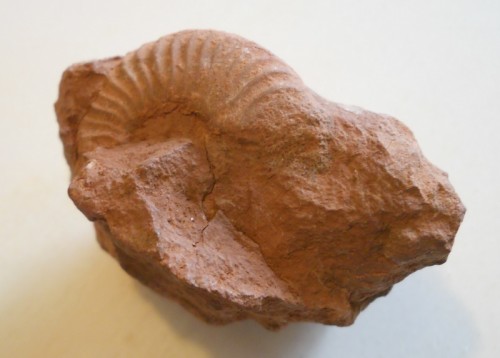Stefano Rossignoli dal 10 Novembre 2011…
Introduzione
L’occasione di scrivere questa guida arriva dal fatto che ho potuto aiutare online una mia cara amica a studiare e soprattutto descrivere gli invertebrati fossili per una prova universitaria di descrizione e riconoscimento. Approfitto subito per ringraziare Claudia per avermi costretto a ripassare caratteristiche che non ricordavo e che ora potrò mettere nero su bianco, mi auguro, con una certa logica!
Premetto immediatamente che tale guida non si occupa di sistematica a livello di determinazione di genere e specie (salvo FORSE rari casi), quanto di aiutare lo studente di un corso universitario di paleontologia nel riconoscimento e soprattutto nella descrizione dei principali taxa di invertebrati fossili a livello di Phylum o poco inferiore. Mi occuperò poi solo di macro-invertebrati, diciamo da qualche millimetro in su!
Mi auguro che questa guida possa essere un compendio anche per studenti delle scuole superiori per imparare a spiegarsi con maggior cognizione di causa e imparare a descrivere un qualsiasi oggetto o organismo.
Spero anche possa aiutare gli appassionati alle prime armi nel reperimento di alcune caratteristiche sconosciute degli invertebrati del passato. So che gli appassionati hanno spesso conoscenze specifiche nettamente maggiori delle mie.
Mi riferirò ad un testo, standard credo almeno in Italia per la sistematica degli invertebrati fossili
di Andrea Allasinaz:”PALEONTOLOGIA GENERALE E SISTEMATICA DEGLI INVERTEBRATI”
Non mi occuperò di precisare se parlo di classe, superclasse, sottoclasse o altro. Per questo, se richiesto basta studiare e farsi un albero filogenetico mentale! Non mi preoccuperò nemmeno troppo di spiegare i termini tecnici quindi sotto coi libri, figure, legende e studiare!!!
La guida potrà essere, anzi indubbiamente sarà incompleta, ma l’obiettivo è di dare l’input per intraprendere lo studio e l’esercizio descrittivo nella giusta direzione.
Parte 1 – Come iniziare
Le Università, i Musei e a volte pure i sentieri Italiani sono pieni di fossili. In questi luoghi potrete andare a reperirli in modo da poterli guardare e studiare. Ci occuperemo quindi di descriverli e riconoscerli ovviamente. Parlo di distinguere un Mollusco Bivalve (o dei Lamellibranchi!) da un Brachiopode o un Mollusco Cefalopode (come un Ammonoide o un Nautiloide) da un Gasteropode e distinguere poi anche un Ammonoide da un Nautiloide!

Prima di cominciare a descrivere un fossile però dovrebbe essere scontato saper descrivere qualcosa di comune.
Durante un paio di lezioni di ripetizione mi chiesero di aiutare una ragazza di prima superiore a studiare scienze. Stava studiando i vari tipi di proiezioni cartografiche (cosa che personalmente ritengo assurda). Secondo me è meglio imparare bene come funziona un tipo o due, vederne le differenze e poi sarà un problema futuro approfondire. Comunque non mi sembrava che questa ragazza avesse problemi seri nella comprensione del testo, ma non riusciva a rispondere alle mie domande.
Io sono un po’ una carogna, lo ammetto, sono anche un provocatore, ma mi venne un’idea: eravamo seduti ad un tavolo, uno a fianco all’altra. Io a destra e lei a sinistra. Presi un bicchiere che avevamo di fronte a noi e lo misi sull’angolo di fronte a destra del nostro tavolo, proprio sul bordo, che quasi cadeva e le chiesi:”Mi sai spiegare dove ho messo quel bicchiere?”.
Mi guardò stranita come fossi matto e poi si rese conto che non sapeva dirmelo…. eeeeehhheee è lì, lì davanti no?
Allora chiariamo subito una cosa: Se vogliamo descrivere i fossili prima dobbiamo saper descrivere le cose più semplici.
Un ragazzo o ragazza che si iscrive all’università dovrebbe almeno già saper fare due cose: PARLARE e SCRIVERE. Se non lo sapete fare, allenatevi a descrivere come è fatto un bicchiere, o qualsiasi cosa, dove sta e quali caratteristiche macroscopiche e microscopiche ha.
Prendete poi la descrizione e fatela leggere a qualcuno che non conosce quel bicchiere e chiedetegli poi più o meno di disegnarlo.
Il disegno dovrebbe scostarsi poco dalla realtà.
Supponiamo poi che il bicchiere in questione abbia la base zigrinata.
Non sarà la prima cosa che dovrò scrivere.
Uno, quando disegna un bicchiere non comincia a fare puntini a caso su un foglio perchè il bicchiere è zigrinato da qualche parte. Disegna una figura geometrica ben precisa, un cilindro o un tronco di cono o un tronco di piramide con un certo rapporto tra altezza e larghezza, Per disegnare la zigrinatura, prima dovrò sapere di che forma è la base del bicchiere, quindi nella descrizione procederemo con la forma del bicchiere e poi con la forma della base e poi diremo che la base è zigrinata, puntinata, godronata, scheggiata, ecc, quello che è insomma…
La guida, se avete già capito, potrebbe anche essere finita qui!!! …ma spero che qualche esempio del genere, riguardo gli invertebrati fossili vi sia gradito.